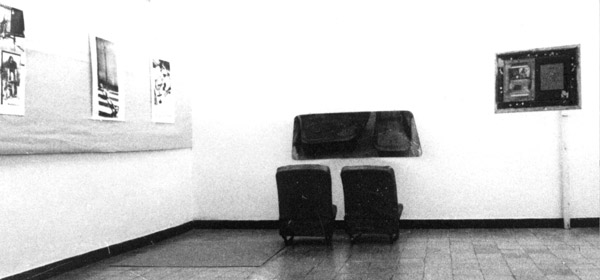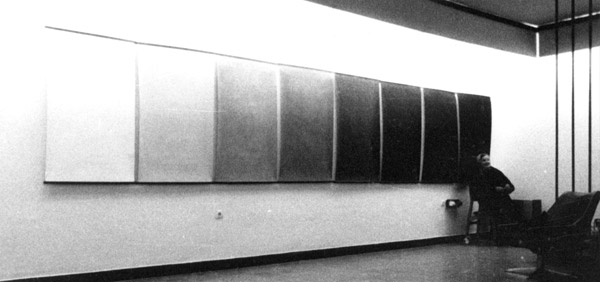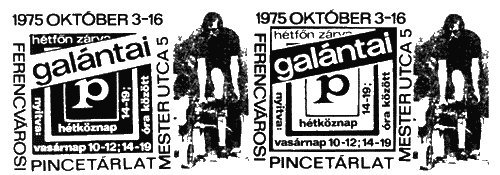Kisérlet a hagyományos műfaji határok átlépésére.

The place of the exhibit is a place of meditation; it functions through the exhibited "changeling" works of art."Two-fold Compensation" (1975)
A kiállítás tere meditációs tér, a benne levő felcserélt műfajú műtárgyak által működik. "Kettős rekompenzáció" (1975)

Prints of trans-functioned objects (1975). (The work is an ad for another work) Graphics of the first iron sculptures, which could not be exhibited, may be reproduced and circulated as posters or, later, as stamps.
Az átfunkcionált tárgyak nyomatai (1975) (A mű egy másik műnek a reklámja) Az első vasszobrok, melyek kiállításra nem kerülhettek, grafikaként sokszorosítva terjedhetnek poszterként, majd később bélyegként.

Paintings as a succession of monochrome colors from black through gray to white (painting replacing a painting).
A festmények monokróm színsorként a feketétől a szürkéken keresztül a fehérig (festményt helyettesítő festmény).

The invitation to it is also part of the exhibition: it solicits visitors with a halved counter-value stamp of half (monetary) value. The city flooded with little stickers (pasted and hand-distributed), something which was unusual at the time (the stickers featuring a photo of Galántai, pushing his sculpture Counter-Stepper mounted on wheels).
A meghívó is a kiállítás része, egy félbevágott "ellenérték" pecséttel félbevágott értékkel (pénz) invitál. A város elárasztva kis reklámcimkével (ragasztva és osztogatva), ami akkor még nem volt szokásos (a címkén Galántai fotója, amint az "Ellenlépő" c. kerekes szobrát tolja).
The introduction to the catalogue was written by László Beke, under the pseudonym "Éva Baráth".
A kiállítás katalógusához Beke László "Baráth Éva" álnévvel írt bevezetőt.

